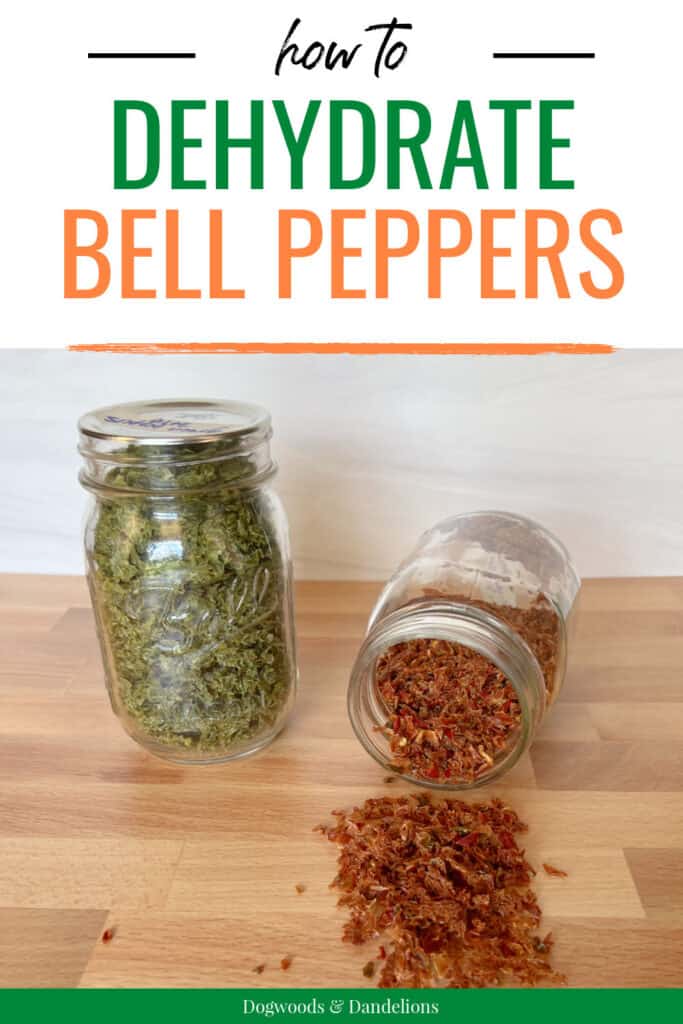How to Dehydrate Bell Peppers
If your garden has an abundance of bell peppers, you may want to preserve them for later. Over the years, I’ve found that dehydrating bell peppers is an easy way to preserve the peppers when I plant too many bell pepper plants (which I seem to do every year).
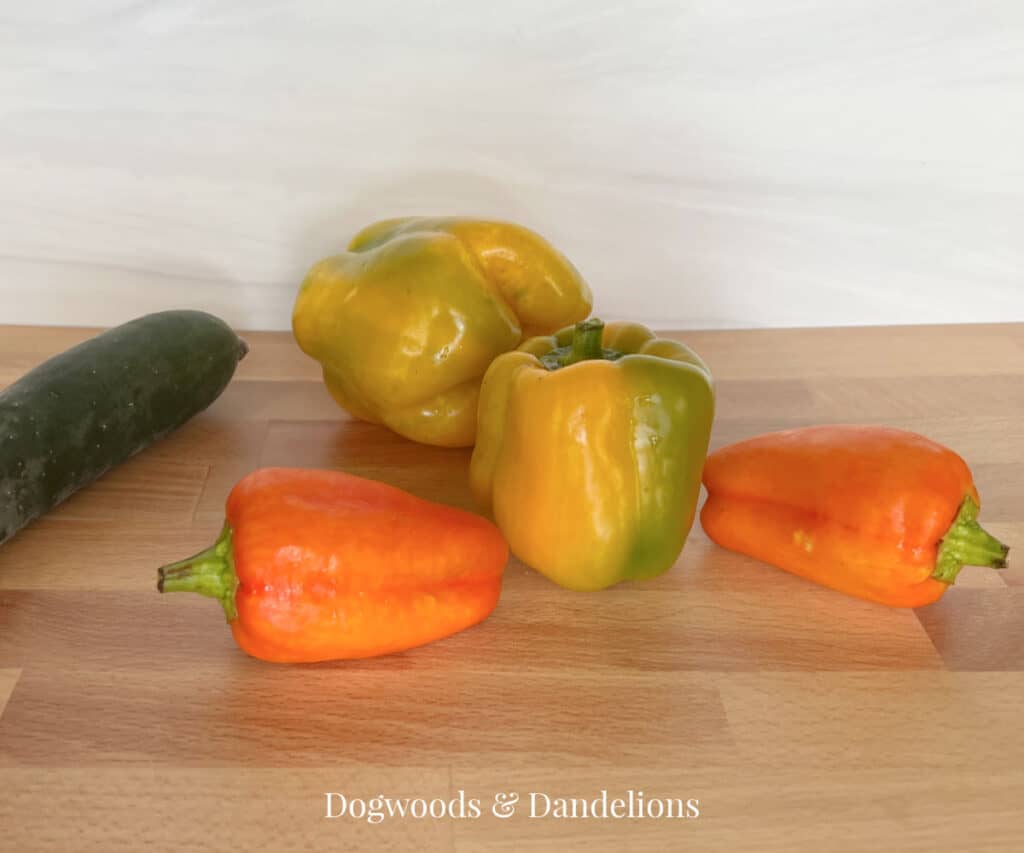
Affiliate Disclosure: Please note that some of the links in this article may be affiliate links and I may receive a small commission if you purchase something through a link. It will not change your cost. As an Amazon Associate, I earn from qualifying purchases. For more information, see my disclosures page.)
Tools You Need for Dehydrating Bell Peppers
The main tools you need for dehydrating bell peppers are a food dehydrator, a sharp kitchen knife, and a cutting board. I have this electric dehydrator and it has served me well for almost 10 years now.
However, many people tout the Excaliber dehydrator as the best dehydrator on the market. It is quite a bit more expensive than mine though.
I get the best results if I chop the fresh bell peppers by hand. The food processor tends to liquefy some of the peppers, making them take longer to dry.
If you want to dehydrate diced bell peppers, you will also need the screens that you can order separately. You will need to order the appropriate screens for your dehydrator model.
The screens will prevent the small pieces from falling through the trays. Remember, as the food dries, it will shrink significantly.
How to Dehydrate Bell Peppers
Dehydrating bell peppers doesn’t take much hands-on time. First, wash your fresh peppers well. Decide whether you want to dehydrate slices or pieces.
Cut the peppers into slices or pieces, based on how you will use them in recipes later. Try to remove most of the white membrane in the peppers.
You can dehydrate both slices and pieces of pepper at the same time, but the diced pieces will dehydrate quicker than sliced peppers.
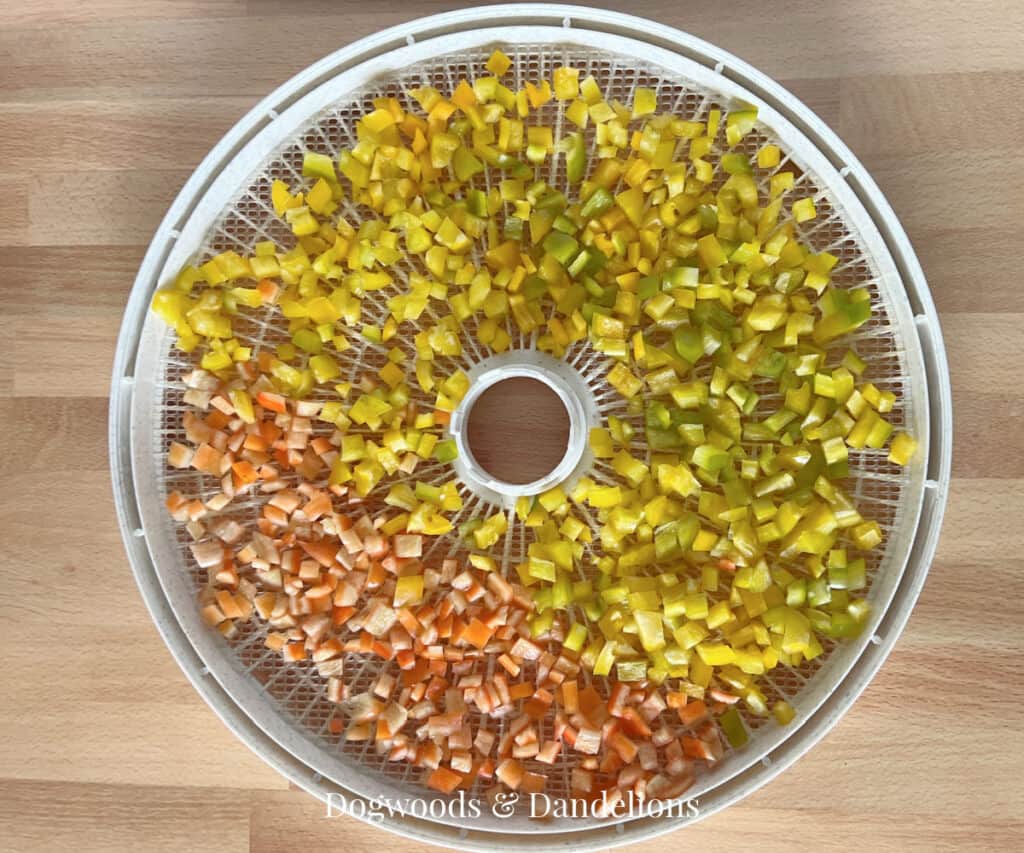
You can dry peppers of any color – green bell peppers, red peppers, yellow peppers, and purple peppers. You can choose to dry each different color on a separate tray or mix them all together for a colorful mix.
Spread your pepper pieces on your drying screens that are set on your dehydrator trays. Be sure to spread the pieces in a single layer. The pepper pieces need plenty of space for good airflow. Set your dehydrator temperature to 135 degrees.
The drying time will depend on how thick the peppers are as well as what size pieces you cut them in. Thicker peppers will take longer to dry versus thinner peppers.
And the fuller your dehydrator, the longer it will take also. But allow at least 12 hours to fully dehydrate peppers.
How Do You Know When Your Peppers Are Dry?
You will know your peppers are fully dry when they are no longer tacky when you touch them. There should be no sign of moisture on the peppers. They will feel brittle and slices should snap when broken.
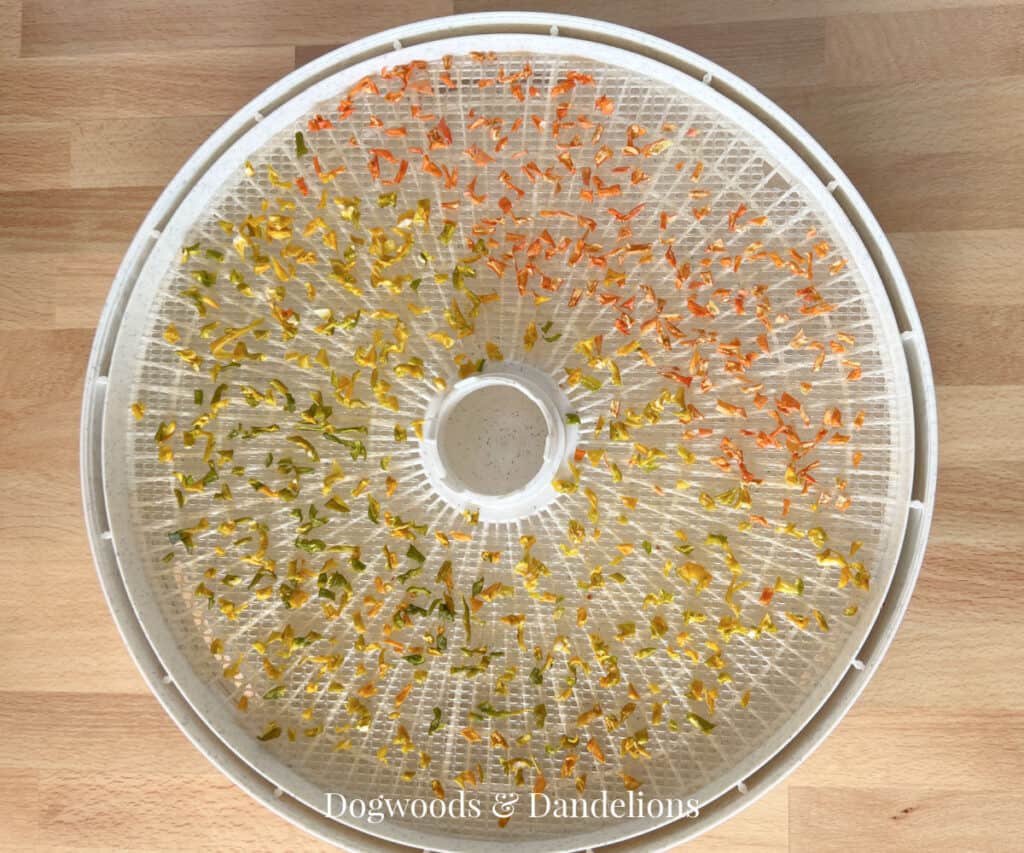
Can You Dehydrate Peppers in an Oven?
You may be able to dehydrate peppers in an oven (or an air fryer) if your oven can be set to a very low temperature. My oven allows you to set the temperature as low as 100 degrees.
Since you dry peppers at 135 degrees, I could feasibly use my oven. A convection oven will work even better as the circulating air will help them dry more evenly.
However, drying peppers in an oven will use more electricity than a dehydrator and the peppers will need to be watched a bit more closely and stirred occasionally while drying.
To dehydrate peppers in your oven, spread the peppers on a piece of parchment paper on a baking sheet. Set the oven temperature to 135 degrees and place the peppers in the oven.
Monitor the peppers closely and stir them every hour or two. If some start drying sooner than others, remove the pieces that are dry and put the remaining peppers back into the oven for another hour or so.
How to Store Dried Bell Peppers
Dehydrated bell peppers need to be stored in a dry location in an airtight container out of direct sunlight. A cool dark place is ideal. I like to store my dried peppers that I will be using soon in a mason jar or any other type of glass jars.
For long-term storage, I prefer to store the peppers in a freezer bag in the freezer. You can also vacuum seal dehydrated peppers in a food saver-type bag. Just be sure the sharp edges of the bell pepper pieces don’t cut through the vacuum bag as it is sealing.
If you want to store the pepper pieces for longer than a year, it is a good idea to vacuum seal the peppers and place oxygen absorbers in with the peppers to remove any residual oxygen. Any excess moisture can cause the peppers to mold.
Then place the vacuum-sealed bags in a mylar bag to protect the peppers long-term. Be sure to label the mylar bags so you know what is in them.
I also recommend keeping dehydrated food for long-term storage in a food-grade storage bucket. This will keep rodents from chewing holes in your food bags and ruining all your hard work.
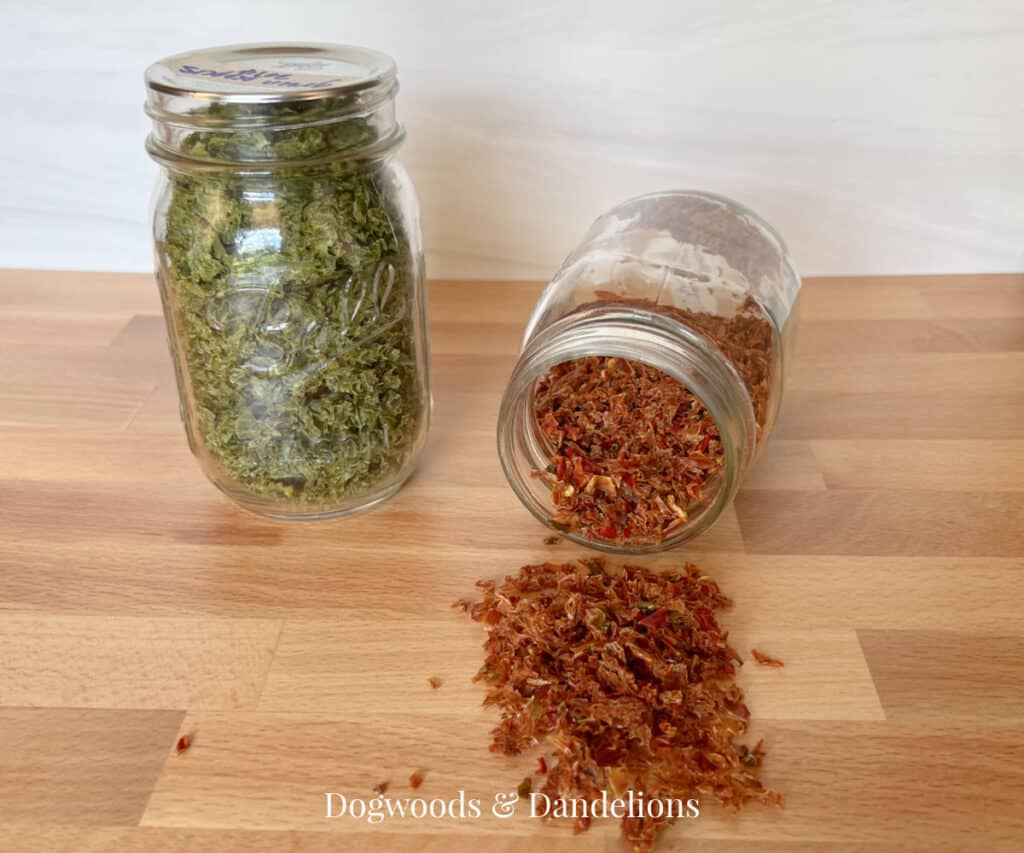
How to Rehydrate Peppers
If you are adding peppers to a soup or stew, you can just add them directly to the liquid and allow the heat with the rest of the ingredients. They are usually soft and ready to eat in about 15 to 20 minutes.
If you want to rehydrate peppers to use in other recipes, pour boiling water over the peppers in a heat-proof jar or bowl. Allow them to soak in the hot water for 20-30 minutes to soften. Drain and proceed with the recipe.
What to Make With Dehydrated Peppers
There are many different ways to use dried bell peppers. Soups and stews are a great way to use dehydrated food.
If the soup already contains quite a bit of liquid, you really don’t even have to add any extra. Just toss the dried peppers in and let it cook for 15 minutes or so.
We make a lot of slow cooker soups and stews in the winter and I almost always toss a handful of dehydrated veggies into the slow cooker in the morning. They are soft and delicious by dinnertime.
Making Chili Powder with Dehydrated Peppers
Another fun way to use dehydrated peppers is to grind them to a powder with a coffee grinder or spice grinder. If you dehydrate bell and hot peppers, keep the varieties separate. Then you can create your own custom spice blends with a mixture of dried chile peppers and dried sweet peppers.
Other Uses for Dried Peppers
You can also powder the peppers and use them in homemade hot sauces or enchilada sauce. Dried, ground peppers are also a great addition to dry rubs to sprinkle on meat before grilling.
And a sprinkle of dried peppers can really liven up a meal of nachos or add some color and flavor to steamed, grilled, or roasted vegetables.
You can also use powdered peppers and other dried vegetables to make a delicious homemade vegetable broth powder to use in place of purchased bouillon or vegetable stock.
Can You Dry Hot Peppers the Same Way?
This tutorial for dehydrating sweet bell peppers will also work for other types of peppers like jalapeno peppers, banana peppers, cayenne peppers, and chili peppers. Just be sure to wear disposable gloves when working with hot peppers.
I really enjoy having dried peppers on hand to add to any number of dishes. They don’t take up much room in the pantry or freezer and dehydrating is a great way to store an abundance of homegrown food in a small space.
Read More: Why Dehydrating is the Best Preserving Method for Backyard Gardeners
Related Posts
